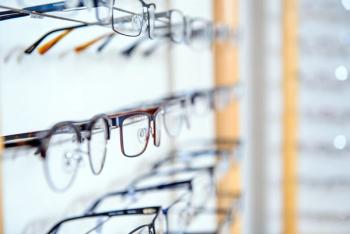
Prevent Blindness declares June 28 to July 4 Fireworks Safety Awareness Week
Sparklers and firecrackers are at the top of the list for fireworks-related injuries. The organization is advising the public to leave fireworks to licensed operators.
Prevent Blindness has declared June 28 to July 4 as the third annual Fireworks Safety Awareness Week.
According to the Consumer Product Safety Commission (CPSC), fireworks caused 9 deaths and 11,500 injuries in 2021, according to its most recent fireworks injury report. The bulk of the injuries occur between mid-June and mid-July.
“Running with sparklers, getting in the way of a bottle rocket, and fiddling around with unexploded fireworks are all just accidents waiting to happen,” Griffin Jardine, MD, an ophthalmologist at John A. Moran Eye Center, said in a news release.
Sparklers and firecrackers are at the top of the list for fireworks-related injuries, with sparklers causing nearly half of all injuries in children younger than 5 years. Sparklers can reach 1,800°. Ophthalmologists recommend leaving fireworks to professionals when celebrating holidays this summer.
To promote safety and keep families safe and out of the emergency room around the July 4 holiday, as part of Fireworks Safety Awareness Week, Prevent Blindness seeks to educate the public on the dangers of fireworks through its
Even fireworks that are purchased legally can prove to contain unsafe — even illegal — contents. This can cause fireworks to malfunction and kill or injure people nearby, even with proper handling.
The new “Fireworks- Be Careful!” episode from the “Seeing Eye to Eye: Celebrating Eye Health” Facebook Live series from Blackdoctor.org will be hosted at 7 p.m. ET June 27, featuring Rachel Hooper, MD, clinical assistant professor of Surgery in the Section of Plastic and Reconstructive Surgery, Department of Surgery at the University of Michigan School of Medicine, and Stephen McLeod, MD, cornea and refractive surgeon, CEO for the American Academy of Ophthalmology and professor and chairman emeritus in the Department of Ophthalmology at the University of California, San Francisco.
The video series is part of a partnership with Blackdoctor.org, the National Eye Institute, Children’s Vison Equity Alliance and Prevent Blindness.
The American Pyrotechnics Association reported 49 states plus the District of Columbia allow some or all types of consumer fireworks. Illinois and Vermont allow only wire or wood stick sparklers and other novelty items. Massachusetts bans all consumer fireworks.
According to the CPSC report, 14 percent of fireworks injuries were to the eyes. According to the American Academy of Ophthalmology (AAO), in the most severe cases, fireworks can rupture the globe of the eye, cause chemical and thermal burns, corneal abrasions and retinal detachment — all of which can cause permanent eye damage and vision loss.
Moreover, the CPSC report noted children and young adults are frequent victims, with children aged 15 and under making up one-third of the reported injuries. The report also noted half of the injuries requiring an emergency room visit were to people age 20 or younger, with firecrackers the leading cause of injury, sending more than 2,000 people to the emergency room.
“Have a safe Independence Day this year by leaving the fireworks to licensed professionals,” said Jeff Todd, president and CEO of Prevent Blindness. “And remember to be vigilant about your surroundings, as bystanders can also be injured by errant fireworks and shrapnel.”
According to a position statement from Prevent Blindness:
- Fireworks are extremely dangerous.
- There is no safe way for you or your family to use fireworks.
- Do not purchase, use or store fireworks or sparklers.
- Protect yourself, your family and your friends by avoiding fireworks and sparklers.
- Attend only authorized public fireworks displays conducted by licensed operators but be aware that even professional displays can be dangerous.
Visit the
Newsletter
Want more insights like this? Subscribe to Optometry Times and get clinical pearls and practice tips delivered straight to your inbox.


















































.png)


